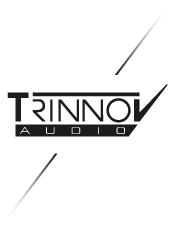
Maor Appelbaum is a mastering engineer based in Los Angeles.
A former DJ and broadcasting engineer, Maor masters a wide variety of music. He has worked with many renamed artists, such as Faith No More, Yes, Meat Loaf, Starset, Sepultura, Eric Gales or Walter Trout.
In this interview, he tells us about the major benefits bringing the Trinnov into his studio has had on his work.

My name is Maor Applebaum. I'm a mastering engineer located in Los Angeles. I work with artists such as Faith No More, Yes, Meat Loaf, Starset, Sepultura, Eric Gales, Walter Trout.
Not only that, but I enjoy doing mastering for different formats, different eras of music, all styles of music from all over the world ranging from the lightest, acoustic and dynamic, to the most aggressive, pushed, and anything in between.
In mastering, I bring an objective and new perspective to the project. Having the experience of being a DJ, a broadcasting engineer and a music journalist gave me a lot of background in how people consume the music.
It all worked together and aligned me for mastering, which is really what I enjoy the most.
What was your introduction to Trinnov like ?
In the beginning, when I tried active room correction, it didn't always work good. Sometimes, if you have a good room, maybe it's better to leave it as is, or you really need to tweak it in a way that doesn't touch it too much.
I've known Trinnov for many years. It wasn't something that I needed in the older studios, but I still remembered that it's powerful and you have so many features in it that you can actually tweak. When we built this room, the "lower tier" of room correction was not good enough to fix it, and it required more power.
After talking to fellow engineers that I know had used active room correction for years, they all mentioned that I should try Trinnov. So I brought in the unit, we tweaked it with the room, made some adjustments and we got it to sit perfect.
Fixing that low end was the key to get everything sounding clear. The next day, I already did a record with it, and that record actually got a Juno for Best Heavy Metal in Hard Rock.

How would you describe the calibration process?
In my case, tweaking took a long time because we really wanted to dial in. That goes into even how much input we're feeding the machine, the increments of the input and the output and all that. But that's on a personal level, how I work the room.
The initial setup is straightforward. The good thing is I had someone who is already experienced, so it was much faster. And I would suggest if you have a unit like this, bring someone who knows how to run this because it's going to take less time.
How has it influenced your workflow?
I think a Trinnov can really help in plenty of situations. If it's all dialed well with the specs of the room and working the room and your taste and how it responds, the way you work with it, it translates outside as well. You probably have fewer revisions in terms of dealing with inaccuracies.
Another thing is that you work faster because you're compensating less. You're always compensating in a certain way, but the less you're compensating, the more you can focus on your work.

Is Trinnov worth its investment ?
Think of it as a machine. It has the coding that does the calculation, it has the conversion, and it has its whole packaging. It's a plug and play, basically. Currently, I don't know of any other device that does this or any software that does exactly this. It's a lot of things in one box. Well thought, well invested, well-designed and cost. You're working with it all the time. It's like the speakers. You're running music through it. So anytime you're working on a project, you're paying it off. I see it as a good investment for the future as well, because any room I'll move into, I can still use this unit and tune the room.

